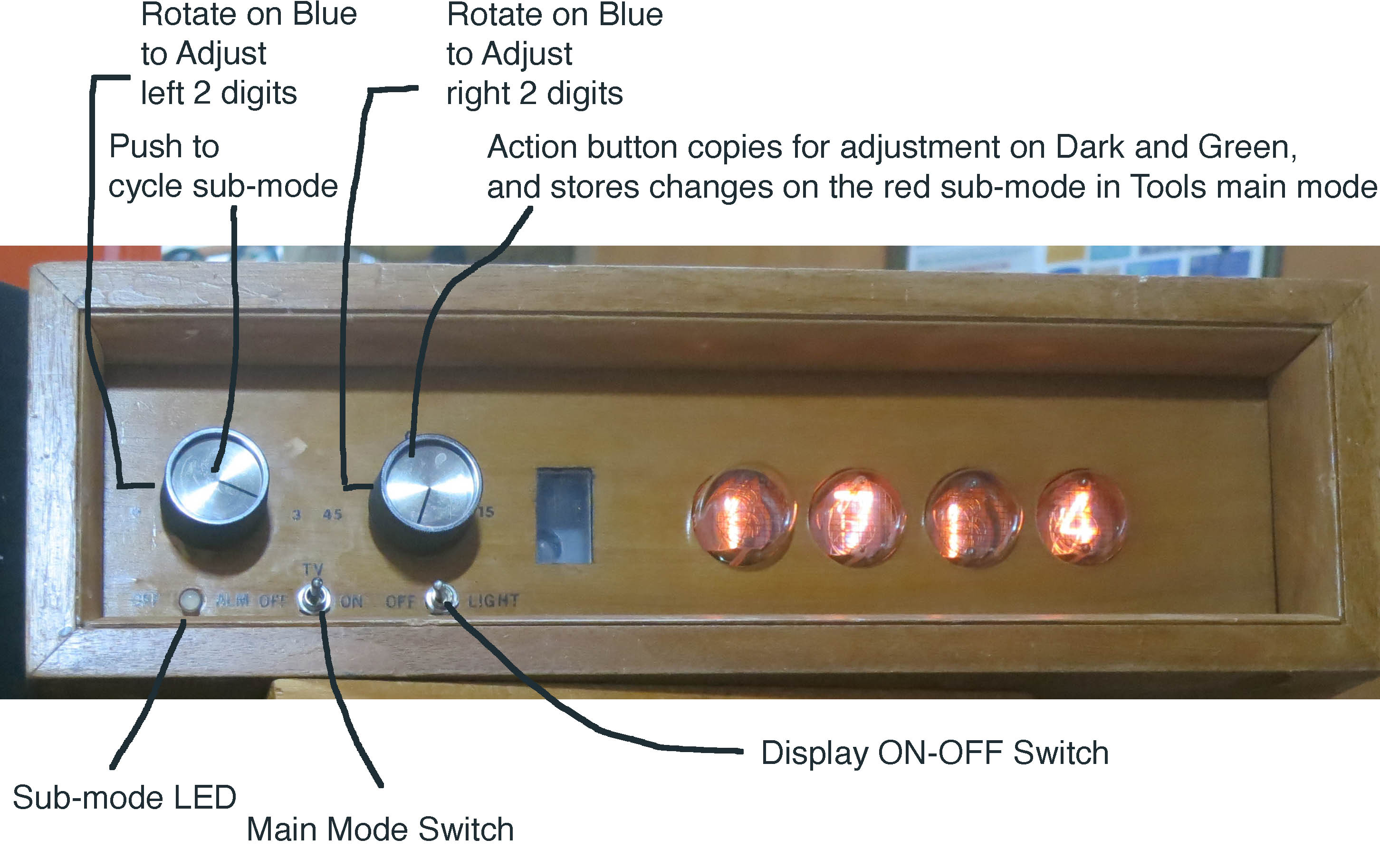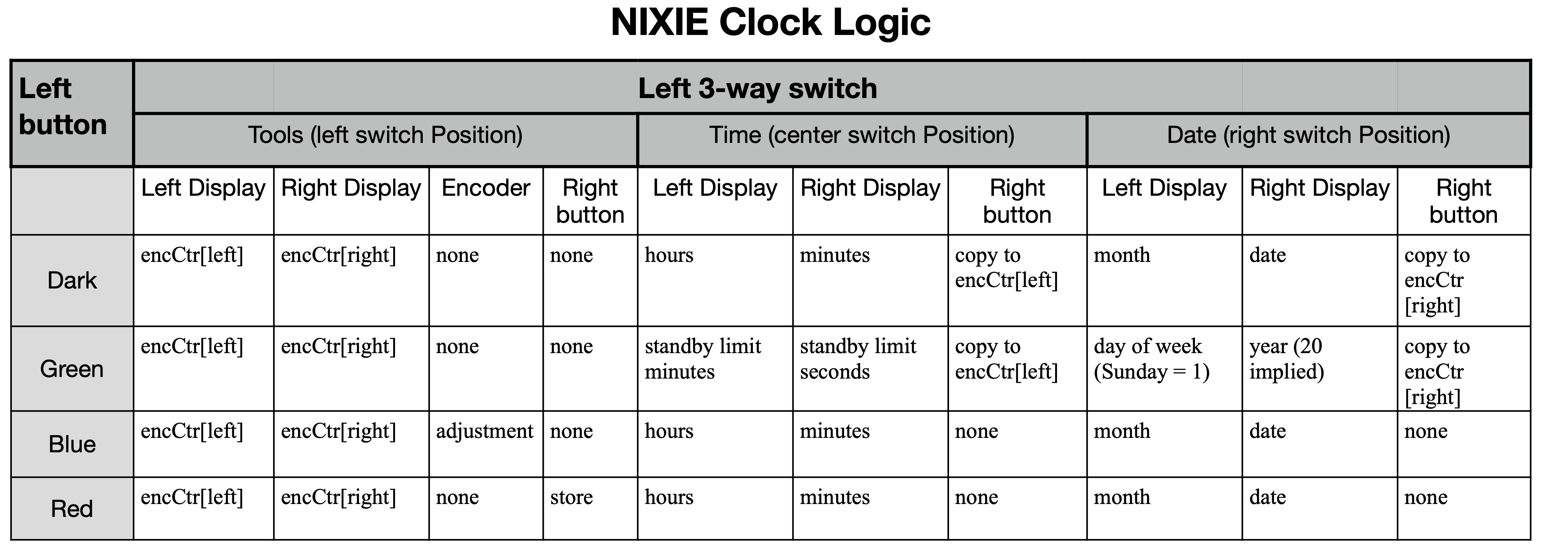Here are the instructions:

Here are the Display Modes:

Here are the circuit diagrams
|
In the early 1970's I made a digital clock using the only electronic digital displays avaliable, ""Nixie" tubes, which are neon gas discharges with ten cathodes shaped as numbers. These are the original end-view Burroughs B-5042 Nixies, not the side-view ones used today in "retro" clocks. They were then too expensive for consumer products, but I was able to recycle counter asemblies which were originally used in lab equipment. Two os these, the NIXIEs and the cabinet are all that remains in the present implementation.
This was a very big deal at the time The now ubiquitous 32768 Hz watch quartz crystals had not then been invented, so the first implementation used a 480 hz tuning fork, shown. Sometime later a second version used a 2.15 MHz AT-cut crystalwhich requiried an extensive divider with an odd ratio. Orignally the oscillator was contained in a thermostatically-controlled oven in a vacuum bottle, but this was later discarded. These were put in a large metal box. The photo shows its contents, plus the assembly in the clock which received the one-minute signal from it. The current, fourth, version retains only the chassis from the third version, plus the box , NIXIEs, and the original transistor-based minutes counters. The hours counters are rebuilt to the proper dimensions and pinout to plug into the existing chassis. It is Leonardo based and has an accurate DS3234 clock. It uses an external 10-vot supply and a DC-DC switching converter for the high voltage. It uses the CD4017 decade counter with 10 positive decoded outputs. To reduce ageing of the NIXIEs there is an automatic shutoff after a few minutes, which is programmable. A doppler radar module restores the display when activated. |
Here are the instructions:
|
Here are the Display Modes:
|
| Here are the clock photos |
|
Here are the circuit diagrams |
| Here is the code |